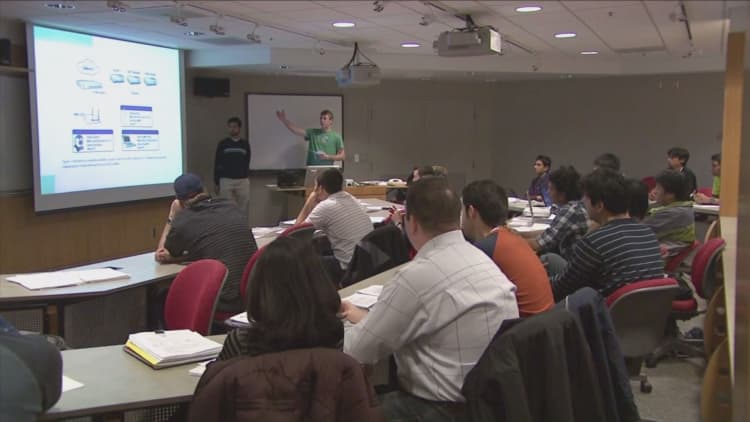
College undergraduates may be borrowing about $12,000 more than they need to finish their education.
That's the conclusion from an online survey by NerdWallet of 522 adults conducted in November.
And students' biggest regret is walking right by "free money" opportunities that could have helped them significantly reduce their bill, according to the survey.
"People believe they didn't apply for enough scholarships when they had the chance," said Brianna McGurran, a student-loan expert at NerdWallet. "I don't think students are putting in the time they need" to research financing options.
An exhaustive search
Higher education already costs a fortune. Tuition, fees, plus room and board during the 2016-2017 academic year averaged $45,370 at a private four-year college, according to The College Board. At an in-state four-year public school, those costs were $20,090.
Prospective students can kick off their scholarship search on the web, using sites such as fastweb.com, scholarships.com and petersons.com.
The problem is that even though high school students can start researching and applying for scholarships as early as their sophomore year, many don't, McGurran explained.
Don't forget that you can keep searching for these opportunities after enrolling in college: Scholarships are available for current college students.
Pell and other grants
Students have also left grant money on the table.
A study by NerdWallet said that in 2014, more than 1.4 million high school graduates failed to fill out the Free Application for Federal Student Aid. That's important, because of that number, nearly 750,000 would have been eligible for a federal Pell Grant.
For 2016-2017, the maximum award for a Pell Grant is $5,815. Pell Grants do not have to be repaid and generally can be awarded for up to 12 semesters of school if you qualify.
Why are people allowing these opportunities to pass them by? "Students are overwhelmed by the college application process, the financial aid process, and adding the layer of applying for a scholarship can be a deterrent," McGurran said.
She suggests that students perform a quick search for scholarships every month and talk to professors, alumni and school counselors to get a sense of what's out there.
Recognize that funding is available from places you might not think, such as for people from local towns or municipalities, McGurran said.
Unpredictable expenses
Living expenses may be another driver behind students' decision to borrow more than they need.
The methodology each school uses to determine students' estimated costs of living on and off campus varies, according to a report from The Century Foundation, a New York-based think tank.
Schools may underestimate these living expenses when calculating their cost of attendance, which could lead to students borrowing more than they had initially expected, McGurran said.
Curbing excessive debt
Prospective college students can try to head off excessive debt by understanding the financial aid process on the front end.
That means those who expect to start college in 2018 should get a jump start on their FAFSA, which their families can file as early as Oct. 1 in 2017 — three months earlier than they were previously allowed.
Students should also know how their financial aid award letter stacks up against the cost of attendance at a given school.
The Department of Education's College Scorecard allows you to compare schools' average annual cost of attendance based on family income, as well as other metrics, including the typical debt load for graduates.
"Understand the financial aid process yourself before you apply to school," McGurran said. "This way, instead of signing a piece of paper before you start your freshman year, the number doesn't seem so abstract and you'll know what you need to pay back."


